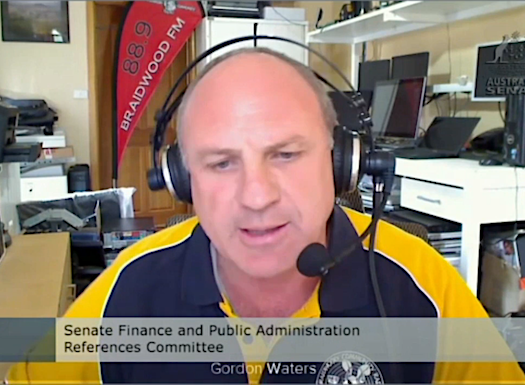Speaking at the Senate Finance and Administration Committee hearing into the bushfires this week, Braidwood FM station manager Gordon Waters praised the work of his station’s volunteers and asked for more recognition of the role community radio plays in emergencies.
“For listeners in our area we were the only source of information from the ground,” said Waters.
He also told the Senate committee that his broadcasters “found it very difficult at times to contact the emergency management authorities to get accurate information or any information at all.”
The station was able to provide very granular information on where the fire was, telling listeners the exact property it was approaching.
“Because it was down to such a local level so that if the RFS said the fire was along this highway, from the information we had we could actually say ‘yes it’s next door to John Smith’s place’.
CBAA CEO Jon Bisset also addressed the Inquiry, telling Senators that 918,000 Australians “listen exclusively to community radio – that is, they listen to community radio but not commercial radio or ABC/SBS. This figure shows the importance of utilising the sector for government communications, whether in future bushfire emergencies or equally with the current COVID-19 health crisis.”
During the devastating 2019-20 bushfire season, 80 community radio stations broadcast to fire affected communities. Those stations are closely linked to their local communities, drawing their volunteers and staff directly from the towns they serve.
“Along with the heartbreaking stories, we’ve heard about the many ways stations served their communities during and in the aftermath – conducting formal emergency broadcasting, sharing emergency and community information on air and online, connecting people to vital evacuation and relief services and working with community groups to organise local fundraising events.
“These services were only made more critical when power, internet and mobile reception went down and community radio remained one of the only sources of local information,” he said.
The CBAA’s submission to the inquiry also focused on the challenges stations faced, the Victorian emergency broadcasting model and the need for the involvement and integration of our sector in the Government’s emergency planning. It emphasised that community radio is “hyper-local.”
The submission also discussed the small budgets of community radio stations, and the difficulty of quickly mobilising ‘community capital’ to face funding shortfalls in the same way as financial capital.
The ABC also made a submission to the Inquiry (see our other report).

